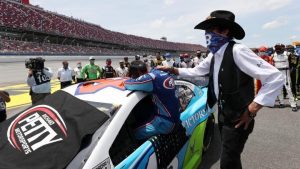The wide galaxy of software applications has spread in every event in this whole wide world, so it does exist at its extreme innovative existence at the NASCAR, one of the most popular sporting events in the world.
Did you know that what types of systems and software the teams at NASCAR are running on their pit box displays, and back in the garage? What we know is NASCAR controls the applications which make the event thru the NASCAR’s official stat keeping system. What we really want to know the technology which is used to bring this elite software system into its current existence.

All eyes today will be on NASCAR at the Pocono raceway, it will be exciting to see the competing pit coaches at NACAR use the state keeping screens to break down overhead video of the last pit stop and make notes or adjustments for the next change. This critical activity requires a lot of coordination and critical thinking. It reminds of those nail-biting movies like “birdcage” and the “silence”, where survival comes with the cost of making critical decisions.
Computer scientists at Washington University have built software that is integrated into modern technologies that enable tv viewers to immediately see how air moves through moving vehicles. This algorithm, first introduced last year at a computer graphics conference, has been used by sports network ESPN and sports technology business Sportvision Inc. to build a modern racing coverage influence. The accelerated progress took its toll at the end of July as ESPN used the Draft Track system to imagine the air movement behind cars in the Allstate 400 at the Brickyard, a NASCAR event on the Indianapolis Motor Speedway
Recently a bunch of developers from Washington University re-developed an Algorithm that dramatically speeds simulations of the real-time fluid dynamics. Along with ESPN, a corporation called Sportvision, headquartered in Chicago, has created the NASCAR racing program. The program Draft Track measures air movement across the vehicles and then shows it behind the vehicle as trailing colors. Green, blue, yellow, and red corresponds to different airflow speeds and directions when two or more cars approach each other while driving at speeds above 200 km / h. Firstly, the new algorithm simulates all the ways in which smoke, fire – or in this case modified stock cars – can act. The simulation then runs for a reduced number of physically possible parameters. Which helps the model to run faster than before a million times. This is all functional now at the NASCAR Pocono Raceway, making it once of the most technologically advanced sporting events in the world.
The galaxy of software applications and systems continue to grow and so is the complexity to create viable methodologies that allow software testing to be comprehensive enough to make this function in a clean and clear existence.
